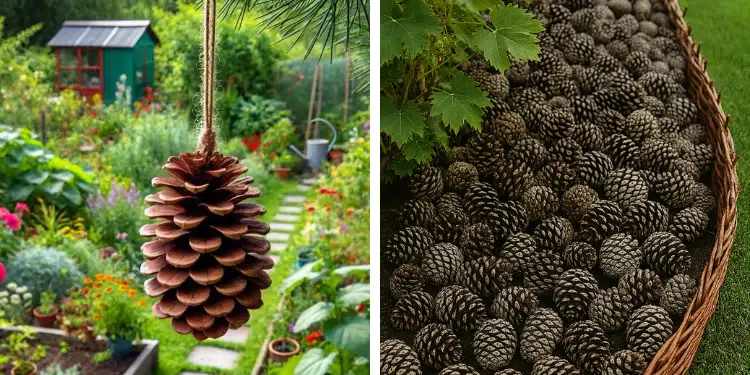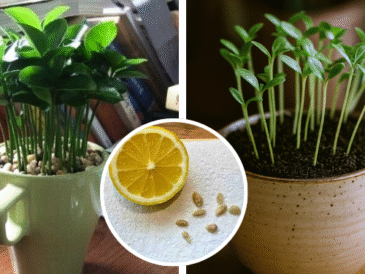Every gardener knows that nature often offers the best solutions – sometimes in the simplest, most overlooked forms.
We invest in expensive fertilizers, chemical pest repellents, and fancy garden gadgets, yet some of the most powerful tools for garden health and balance are free and already lying on the forest floor.
One of the most underrated examples? The humble pine cone.
At first glance, a pine cone might look like nothing more than a rustic decoration or a seasonal craft supply.
But when used strategically in your garden – especially in autumn – this natural object becomes much more than a pretty ornament.
Understanding Pine Cones – Nature’s Ingenious Design
Before we dive into the many ways pine cones benefit your garden, it’s worth understanding what they really are and why nature designed them the way it did.
What Are Pine Cones?
Pine cones are the seed-bearing structures of coniferous trees, such as pines, spruces, and firs.
They serve as protective casings for the tree’s seeds, shielding them from harsh weather and hungry animals until conditions are just right for germination.
There are two types of cones:
- Female cones – Larger, woody cones that contain seeds.
- Male cones – Smaller, softer cones that produce pollen (usually fall off after pollination).
When most people think of a pine cone, they’re picturing the female version – the iconic, woody cone that drops to the ground or clings to branches.
How Pine Cones Respond to Weather
One of the most fascinating things about pine cones is their natural hygroscopic property – they open and close depending on humidity levels:
- In dry weather, pine cones open up to release their seeds.
- In damp or rainy conditions, they close tightly to protect them.
This built-in sensitivity to moisture is the key to several of their practical uses in gardening – and one major reason you should hang them near your plants in fall.
Pine Cones as Natural Weather Predictors
One of the oldest and most useful reasons gardeners hang pine cones in autumn is to use them as a natural barometer.
How It Works
Because pine cones respond to changes in air moisture, they act as simple yet reliable weather indicators.
When you hang a pine cone in a visible spot – like a tree branch, trellis, or fence post near your garden – you can quickly read upcoming weather conditions just by looking at it:
- Open pine cone = dry air ahead (good time for watering, planting, or harvesting)
- Closed pine cone = high humidity or rain is coming (prepare for wet soil and delay watering)
This is especially useful in the fall, when unpredictable weather patterns can affect:
- When to water and how much
- When to harvest certain crops
- When to cover tender plants
- How to plan composting and mulching schedules
Pro tip: Hang 2–3 pine cones around different areas of the garden (especially where you make planting decisions).
Over time, you’ll learn how quickly they react to changes in humidity – often 12–24 hours before rain arrives.
Pine Cones as Pest Deterrents
Believe it or not, pine cones can also help keep certain pests at bay – without any toxic sprays or traps.
1. Deterring Small Mammals and Rodents
Squirrels, mice, and voles can cause serious damage to bulbs, roots, and seedlings in fall.
The natural scent of pine resin, combined with the rough texture of cones, discourages some rodents from digging or nesting nearby.
How to use:
- Scatter pine cones around the perimeter of raised beds or near vulnerable plants.
- Hang a few from low tree branches – the scent is stronger when slightly warmed by the sun.
2. Repelling Slugs and Snails
The woody, spiky structure of pine cones can be used as a physical barrier to deter slugs and snails from reaching plants. It’s not foolproof, but it can reduce damage when combined with other natural methods.
How to use:
- Place a circle of pine cones around susceptible plants (like hostas, lettuce, or strawberries).
- Use them as a top layer of mulch near the soil surface to create a rough, uncomfortable texture pests avoid.
3. Discouraging Cats and Digging Animals
If neighborhood cats or raccoons treat your garden beds like a playground, pine cones can help. Their uneven shape and scent discourage digging and scratching.
How to use:
- Spread pine cones evenly across freshly planted beds.
- Hang a few near entry points – the scent combined with movement in the wind can scare away curious animals.
Attracting Beneficial Wildlife and Pollinators
TO CONTUNUE READING THE ARTICL PLEASE SEE PAGE 2 .




